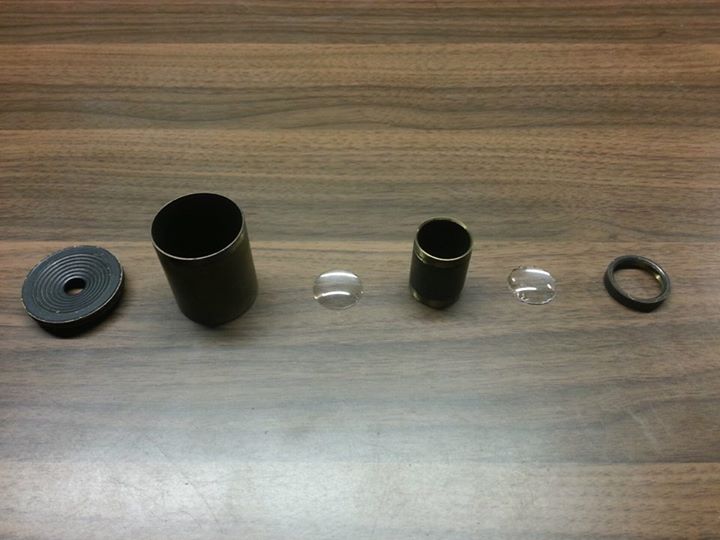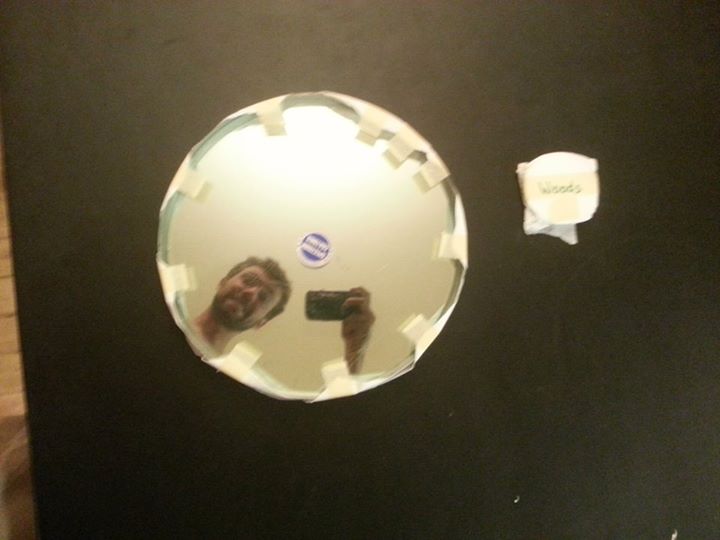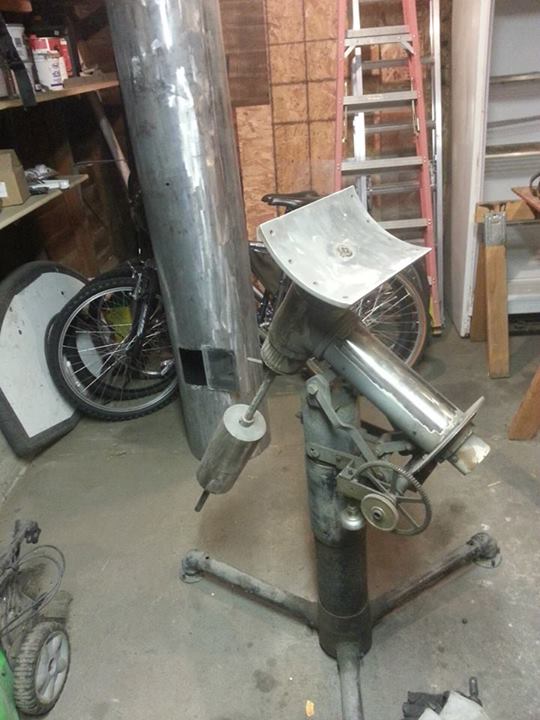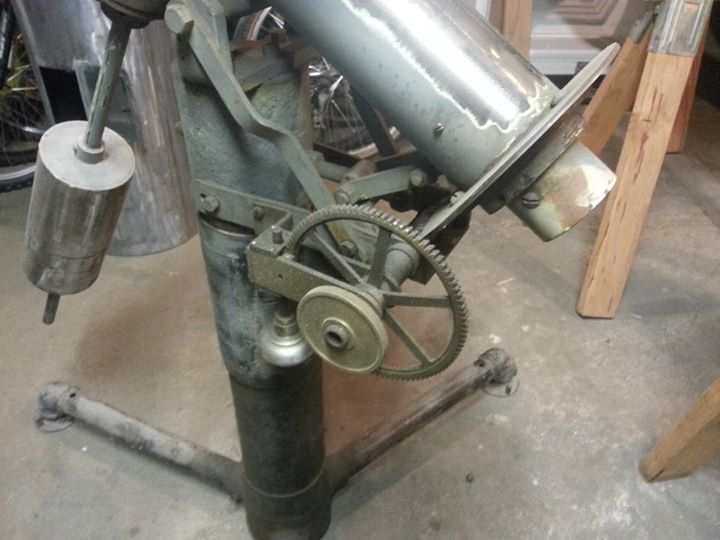#####Restoration of Maurice's 12" German-Equatorial Newtonian Reflector telescope#####
Finally, after far too long, I've started work on the 12" that an old friend gave me more than 4 years ago! If memory serves, the little that is known about the scope's origins is that it was taken from atop a hospital (in Germany, maybe?). Other than that, it's pretty old, rusty, beat to hell, heavy as I'll get out, and a beautiful piece of equipment!
The telescope is a 12" diameter, german-equatorial mounted, newtonian reflector. There are no discernable manufacturing markings or brandings that I can find and there is no documentation to speak of. This project, hosted at Loveland CreatorSpace, will focus simply on getting the telescope put together and working once again. Repair or rusted hardware and repainting/sealing the scope will be a priority, followed by efforts to properly align the optics. Other action items include mounting casters to the base and finding a good way to store the tube safely.
Be sure to check out Loveland CreatorSpace's Meetup Calendar for organized projet work days and, hopefully soon, astronomical observation nights! Also, be sure to check out other LCS member projects on Github
Unfortunately, when I first got the thing, I didn't think to take pictures of it (I'm not the biggest picture buff in the world). So, for the record, I apologize that the photos begin half-way through day two of restoration... also, on transporting it up to Greeley from Woodland Park, I-25 claimed one of the tube covers as its own...scumbag I-25...
Newtonian reflector (class of telescopes invented by Sir Isaac Newton that uses two mirrors and an eyepiece). Click here for an overview of telescope types
Figure 1 - Newtonian Reflector Ray Diagram
German Equatorial Mount (just the way the telescope moves/slews - it follows the stars with one arcing motion) Click here for an overview of telescope mounts
Figure 2 - German Equitorial mount with rotational axes labeled
This is 12" in diameter (pretty darn big - lots of light can get in!), but here's something to give you an idea of how big some popular telescopes are!
Figure 3 - Scaled telscope mirrors. Here's a link of more mirror sizes/types: More Telescope Mirrors
###Telescope Anatomy###
#####The Tube#####
Figure 4 -
#####The Optics#####
Figure 5 - a.) The Eyepiece b.) Primary Mirror (left) Secondary Mirror (right)
#####The Base#####
Figure 6 -
#####The Tracking Assembly#####
Figure 7 - This assembly is responsible for tracking bodies that have been sighted as they move across the sky. A worm gear turns a large spur gear that is pressure-fit to turn the polar axis of the telescope (Figure 2). This worm gear can be turned using two different methods; Two bress knobs on either side turn the spur gear directly (course adjustment) and a single chrome knob, attached to another worm gear/spur gear assembly, turns the spur gear through a gear reduction (fine adjustment).
###Progress###
Here, we will outline the progess that is made during each Special Interest Group (SIG) meeting and Project Work Day (PWD)
#####First Meeting:#####
Several issues have been identified and logged in the issue tracker.
- Casters: Find and purchase casters that will support the telescope. Ideally, these casters will be lockable or will have leveling feet.
- Cut a replacement pressure-plate: One of the two pressure-plates that hold the tracking spur gear to the polar axis (Figure 2) is severely warped (Figure 8 below). A new steel plate is to be cut by Marshall (Figure 8 below).
- Purchase pressure-plate srews: The screws that hold the pressure plates to the tracking assembly are missing.
- Purchase bolt extractor set and tap and die set: Many of the bolts that hold some of the larger parts together have been broken and will require re-tapping.
- Collect remaining parts from Greeley: Some parts are missing entirely. They are located at Maurice's house in Greeley.
Figure 8 - The pressure-plate that holds the large tracking spur gear to the polar axis has been warped
Figure 9 - New plasma-cut pressure-plate by Marshall
#####Second Meeting:#####
The group has decided to disassemble the telescope in order to establish a complete understanding of how the telescope is constructed. This process will also lead to the unbinding of the declination axis, which has proven impossible to rotate (see reference image in Figure 2).







